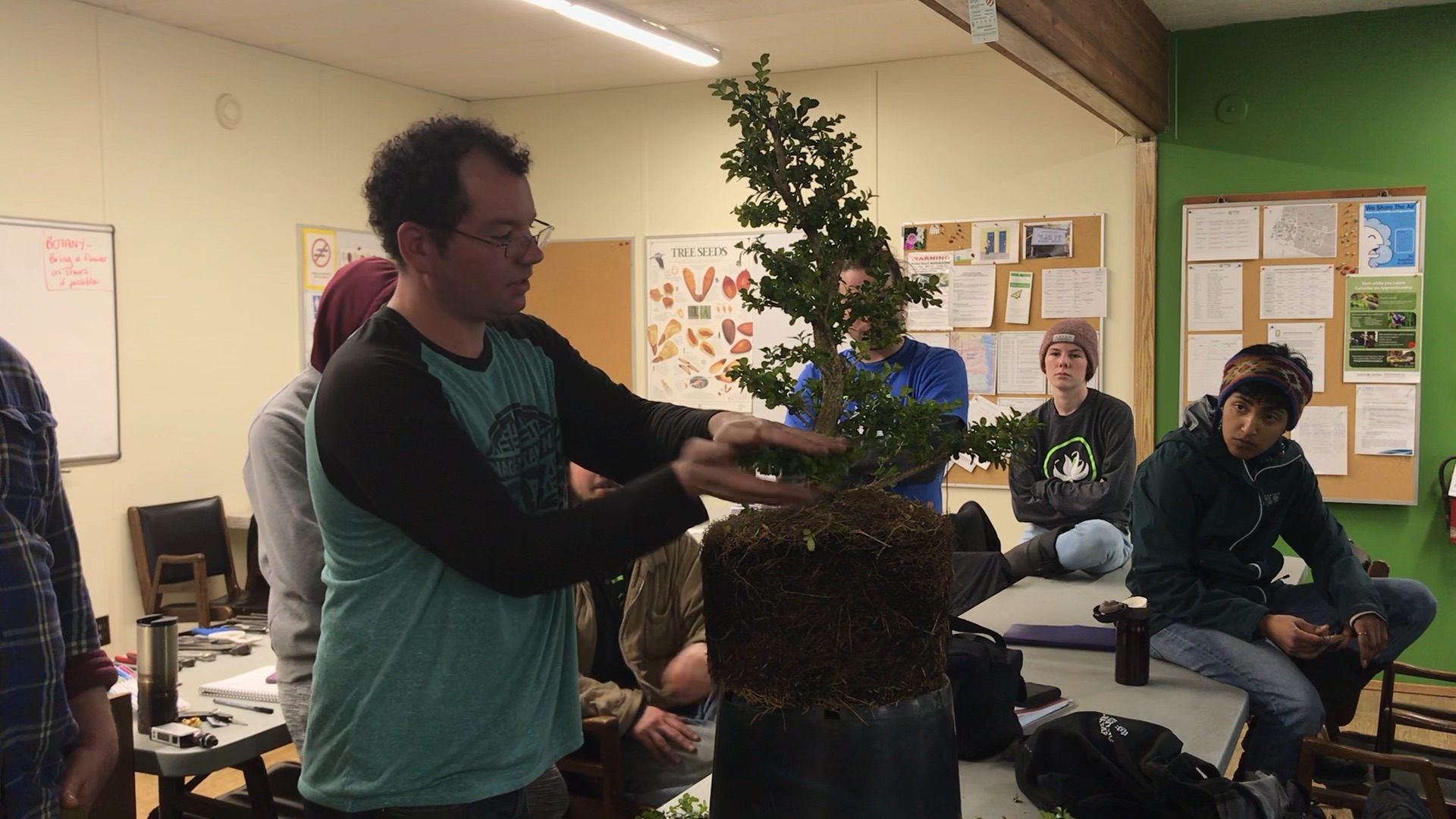An Introduction to Bonsai
by: Lana Ellis and Joshua Hill
 A passionate bonsai enthusiast and owner of Urban Oasis Bonsai, Mark Patterson spoke to the horticultural students at HCP about the art of Bonsai.
A passionate bonsai enthusiast and owner of Urban Oasis Bonsai, Mark Patterson spoke to the horticultural students at HCP about the art of Bonsai.
Mark explained that bonsai is a horticultural and artistic technique, not a species or weird Japanese plant. The word bonsai literally translates to “plant in a pot”. Plants used for bonsai are everyday shrubs and trees that are shaped into miniature proportions by pruning both branches and roots. Most bonsai are outdoor plants.
However, bonsai is also a form of art, like a painting or a sculpture. The art of choosing a tree, studying and learning from the tree, and then using specific techniques of pruning, wiring and care to create a miniaturized, living plant sculpture.
Bonsai cannot be cared for, or thought of, as a house plant. You must visit your tree every day, spend five minutes a day, every day looking at it closely, deciding when to water, pinch or trim. Bonsai growers are very attached to their trees and know every branch intimately.
Important elements in bonsai include the shape of the trunk, the movement of the trunk and branches, the silhouette, branching and root pruning. The type pots and soil composition are also very unique to bonsai.
The trunk is one of the most eye-catching features of a tree, it should be thicker at its base than at the top of the tree, think taper, taper, taper. Mark explained that he can sometime look at 400 trees in a nursery to find a good bonsai stock.
Movement, whether the trunk moves to the left or the right or in an S shape, creates interest and is valued in the creation of bonsai. Movement is also created by the special zig zag pruning technique used in bonsai called the rule of twos. The rule of twos means always cutting back to two internodes. For example, the first cut is back to two internodes, new stems will grow at the cut site and then those will be pruned to the rule of twos , etc. This process creates an interesting, complicated thickening branch which gives shape and defines an area. Bonsai silhouette is usually triangular. When pruning, it is important to remember that bonsai is meant to copy nature and to base the shape of your tree on its nature as a normal size plant.
The bonsai pot is very important, and plants must be in proper bonsai pot to be considered bonsai. Bonsai pots are much smaller, shorter, and flatter than traditional western pots. A bonsai may be grown in a larger pot for more health and comfort but is moved into bonsai pot for showing. The effect of the pot and display of the bonsai is an expression of the bonsai artist.
Bonsai are grown in special soil; the specific mixture unique to each bonsai enthusiast. Mark uses his own mixture of lava rock, sea soil, granite #2 and pine bark. Bonsai soil is a combination designed to let a lot of air into the soil, provide good drainage, and still retain sufficient moisture between watering.
Root pruning is another special and important element in creating bonsai. Root pruning creates a tiny root mass so the tree can fit in a small container. Roots react similar to branches when pruned; growing from the end when cut. As with all pruning, timing and amount is important to allow the tree to recover, grow and continue to thrive.
A highlight of our introduction to bonsai was a demonstration of how to apply the techniques of bonsai to a boxwood. The process of creating a bonsai became clearer as Mark talked us through the steps and encouraged students to get in close and personal and prune some branches. There are many specialized tools for Bonsai, but the boxwood was tender enough to pinch into shape. Mark also demonstrated how to root prune and repot a bonsai into a proper bonsai container. He used a different tree for the root demonstration, as he explained, you shouldn't do appendix surgery and stomach surgery on the day.
Although the art of bonsai takes years to master, Mark's talk and demonstrations allowed us a brief glimpse of the excitement of the creation of bonsai.


